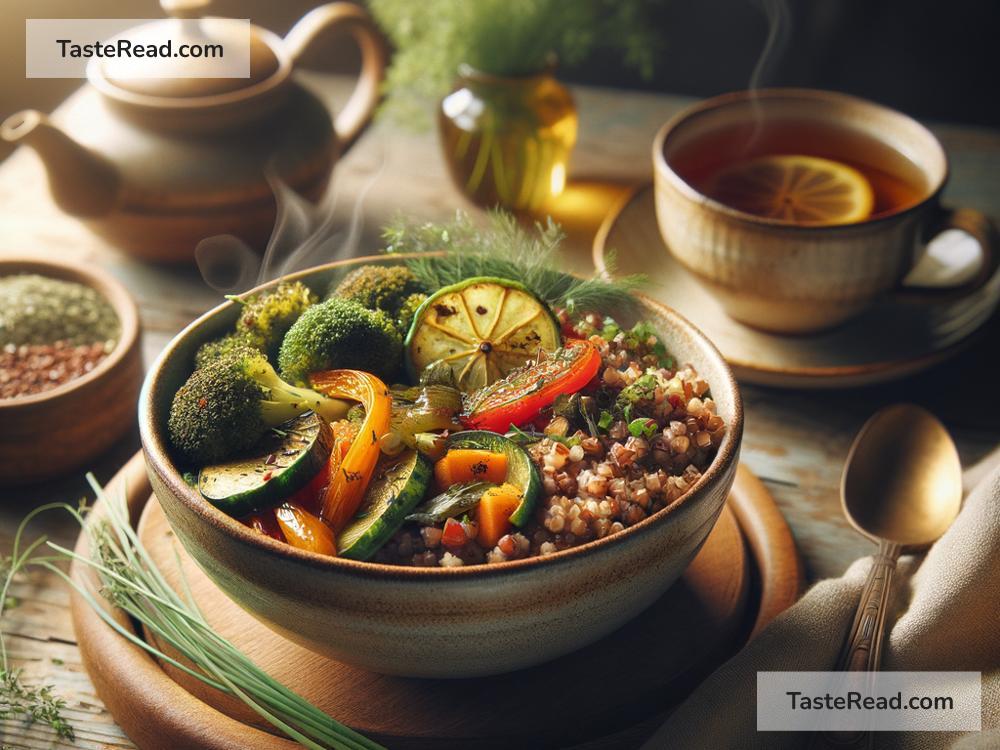The Impact of Buckwheat on Reducing Inflammation During Long Shifts
Long shifts at work can be physically and mentally exhausting. Whether you’re working in healthcare, hospitality, transportation, or any other demanding field, these long hours often lead to fatigue, stress, and inflammation in the body. If you’re searching for a natural but effective way to combat inflammation and feel more energized, you might want to add buckwheat to your diet.
Buckwheat is not related to wheat, despite its name. It’s actually a small seed from a plant that’s related to rhubarb and sorrel. People have been eating buckwheat for centuries, especially in Asia, Eastern Europe, and Russia. Recently, it has gained attention worldwide because of its impressive health benefits.
Let’s dive into how buckwheat can help reduce inflammation and make long work shifts a little easier on your body.
What is Inflammation?
Inflammation is your body’s natural response to injury or stress. It helps protect and heal your body. However, too much inflammation over a long period can be harmful, leading to chronic pain, fatigue, and even serious diseases like arthritis, diabetes, and heart problems.
For people working long shifts, inflammation often comes from physical strain (standing for hours) or stress (mental and emotional exhaustion). Inflammation caused by these factors can result in muscle soreness, headaches, tiredness, and sluggishness.
The good news is that certain foods, like buckwheat, can help reduce inflammation and support your overall health.
Buckwheat: A Superfood for Fighting Inflammation
Buckwheat is often called a superfood because it’s packed with nutrients that help your body function better. There are three main reasons why buckwheat is great for reducing inflammation:
-
Rich in Antioxidants
Buckwheat contains powerful antioxidants like polyphenols and flavonoids. These antioxidants fight free radicals in your body, which are unstable molecules that cause inflammation and damage cells. By reducing free radicals, buckwheat helps your body recover from stress and pain faster. -
Anti-inflammatory Properties
Studies show that buckwheat has natural compounds that directly fight inflammation. These compounds calm the immune system, reducing swelling, muscle aches, and joint pain. If you’re someone who suffers from stiffness after a long shift, buckwheat can be particularly helpful. -
Supports Gut Health
Buckwheat is high in fiber, which is essential for keeping your gut healthy. A balanced gut plays a big role in reducing inflammation throughout the body. Fiber helps good bacteria thrive in your digestive system, keeping your stomach and intestines healthy and improving nutrient absorption. When your gut is strong and healthy, your body is less likely to experience long-term inflammation.
Why Buckwheat is Perfect for Busy Workers
If you work long shifts, you probably don’t have time for complicated meals. But the good thing about buckwheat is that it’s simple to prepare, versatile, and keeps you full for hours. Here’s why buckwheat is a great addition to your work-day meals:
- Easy on Your Stomach: Buckwheat is gluten-free, which makes it easier to digest. This is especially helpful during stressful jobs when your stomach might feel bloated or uneasy.
- Energy Boost: Buckwheat is rich in complex carbohydrates, which give you steady energy rather than a quick spike and crash. Eating buckwheat during or before a long shift can help you stay focused and productive.
- Protein Source: Buckwheat has a good amount of high-quality protein, including all nine essential amino acids that your body needs. This helps rebuild muscles and fight the physical strain of standing, lifting, or moving during long hours.
Easy Ways to Add Buckwheat to Your Diet
Adding buckwheat to your meals is easier than you might think. Here are some simple ideas:
- Breakfast: Start your day with buckwheat pancakes or porridge made from buckwheat groats. You can add fruits, nuts, or honey for extra flavor.
- Lunch or Dinner: Use cooked buckwheat as a base for salads, stir-fries, or soups. It pairs well with vegetables, chicken, or tofu.
- Snacks: Try buckwheat crackers or make your own energy bars using roasted buckwheat, seeds, and dried fruits. These snacks are portable and perfect for a quick bite during your shift.
- Flour Substitute: Buckwheat flour can be used to make bread, muffins, or pizza dough. It’s a healthier alternative to regular flour and adds a nutty flavor to your recipes.
Things to Keep in Mind
While buckwheat is extremely healthy, it’s important to eat it as part of a balanced diet. Pair it with other anti-inflammatory foods like leafy greens, berries, nuts, and fatty fish for the best results. Also, drink plenty of water during your shifts to keep your inflammation under control.
If you have a busy schedule and often skip meals or snack on unhealthy options, buckwheat is a smart choice that fits into your routine. It’s affordable, versatile, and packed with nutrients to help your body handle long hours at work.
Conclusion
Long shifts will always be challenging, but you can take steps to support your body and make the workday easier. Buckwheat is an excellent food for reducing inflammation because of its antioxidants, fiber, and anti-inflammatory properties. It’s easy to prepare and gives you sustained energy, making it perfect for workdays that never seem to end.
By adding buckwheat to your diet, you’ll feel less fatigued, experience fewer aches and pains, and improve your overall health. So, next time you plan your work meals, give buckwheat a try—you’ll be surprised at how much of a difference it can make!


